Electrical axis is all about direction of the depolarization through the ventricles. Therefore, we will be analyzing the upward and downward components of the QRS complex. We will not incorporate the P wave, ST segment, nor T wave in the determination of the axis (although for advanced topics, you can analyze the vector of these waveforms for other purposes).
Remember that we can determine direction based on whether or not a deflection on the ECG is positive or negative. For example, if a charge was moving toward the patient's left (image below), then the charge would be moving toward the positive electrode of lead I, and we would see an upward deflection in lead I:
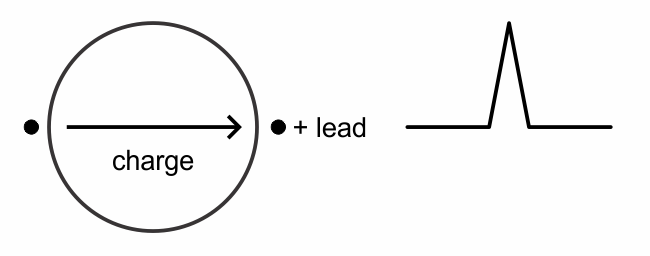
The opposite is shown below.
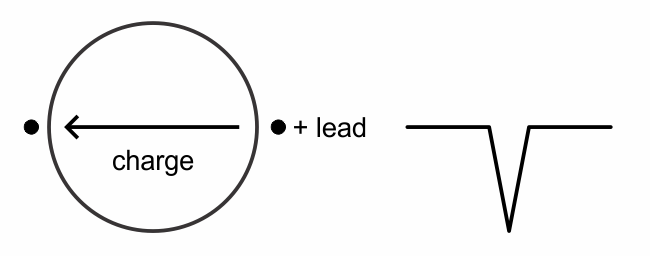
It is important to realize that the electrical activity does not travel in a perfectly straight line. Therefore, we are looking at the majority of electrical movement. There might be a small downward deflection with a large upward deflection in one lead and when this occurs, we still say that the deflection is upward.
What if the majority of movement was travelling toward the patient's head, in an upward direction? What would we see in lead I? Note that the lead is at 90 degrees to the direction of activity. Therefore, we would expect that the signal would be equally balanced with positive and negative deflections, since the activity is not really moving toward nor away from the positive end of lead I. Of course remember, the electrical activity does not travel in a straight line, so there will be some deflections even when it is moving at 90 degrees to the lead:
When this occurs, we say that this lead is the isoelectric lead. It is neither a positive nor negative deflection, but it will have an equal amount of upward and downward deflections. Memorize and understand this detail. It is important.
If we focused on only 2 leads, leads I and aVF, then they would map out like this:
These 2 leads define 4 quadrants. These 4 quadrants are rough estimates of normal and abnormal axes. In the image below, LAD = left axis deviation and RAD = right axis deviation:
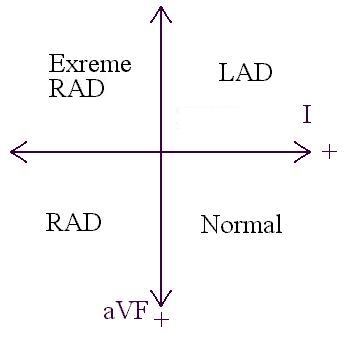
The normal axis occupies MORE than the right lower quadrant. It also extends upward into part of the right upper quadrant too. We will show more details about this in the next lesson.
We can use just 2 leads from the 12 lead ECG to determine which quadrant the axis fall into. First, determine whether the deflection in lead I is upgoing or downgoing. This will determine whether the electrical activity is moving to the right or to the left. In the 2 images below, the charge is moving to the left, which causes an upward deflection in lead I. This means that on the quadrant image, the 2 shaded quadrants represent the area where lead I is positive.

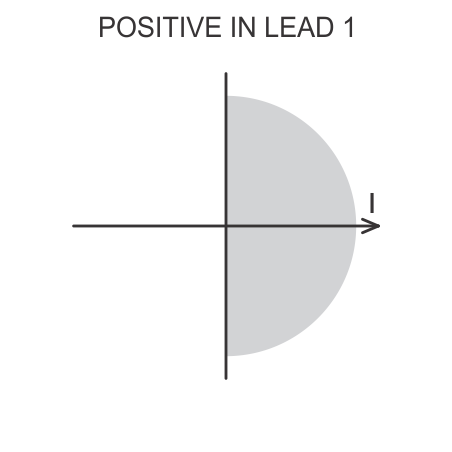
The same would be true in reverse:

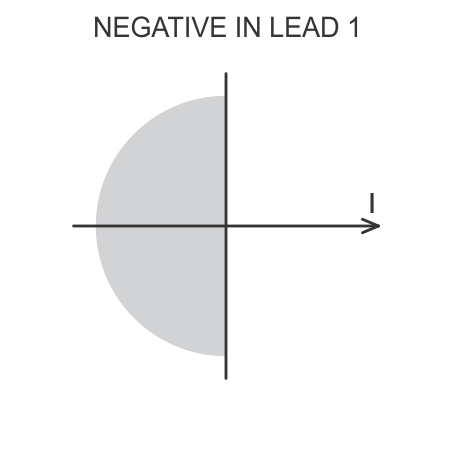
Next, look at lead aVF and determine if aVF is positive or negative.
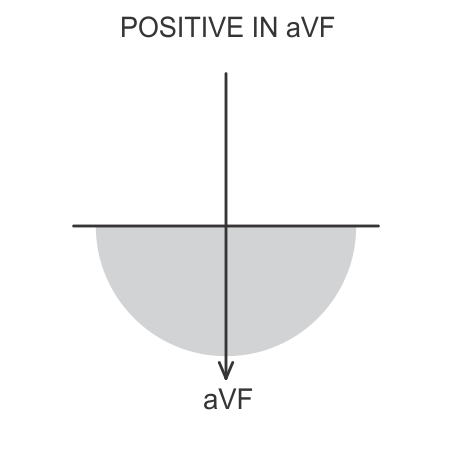
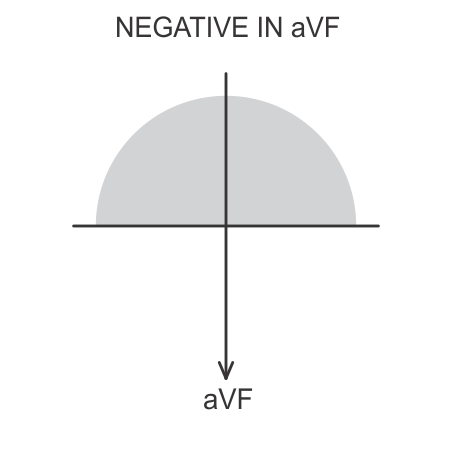
Combining our results from Leads I and aVF, we can superimpose the 2 shaded regions to define one single quadrant where the axis lies.
Using blue for lead 1 and red for aVF, For example, positive in lead I with positive in lead aVF would look like this: 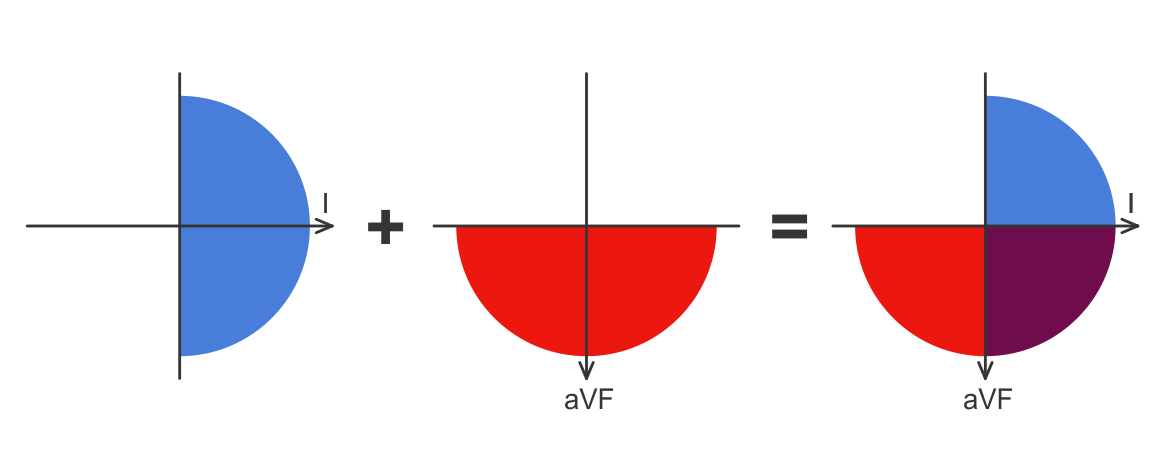
With the information from these 2 leads, we can show that the axis is in the right lower quadrant.